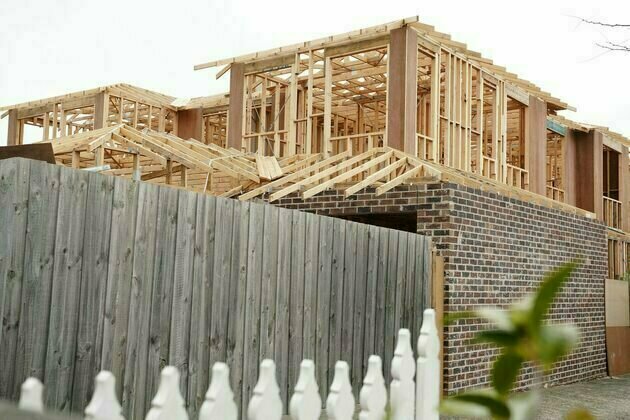Move FM Australian News

Australia is forecast to fall 262,000 homes short of its housing target. We need bold action
May 22, 2025Australia’s plan to build 1.2 million new homes by 2029 is in trouble. A new report by the National Housing Supply and Affordability Council (NHSAC) shows we are likely to miss this ambitious target by a huge margin.
At the current pace, the council forecasts we will fall about 262,000 homes short of the goal. In other words, for every five homes we need, we’re only on track to build about four.
No state or territory is building enough to meet its share. This is more than just a number; it means the housing affordability crisis will continue unless we act fast.
The report lays out five areas of priority for reform. But implementing its recommendations will require bolder action than we’re currently seeing.
NHSAC’s State of the Housing System 2025 report shows very challenging conditions for future home buyers and renters. By the end of 2024, it took half of median household income to service a new mortgage.
Think about that: half of your income gets spent on maintaining a roof over your head. That’s well above one common measure of “housing stress” for lower-income households: spending more than 30% of gross income on housing.
Anyone planning to purchase their first home faces an average savings period that extends beyond ten years just for their deposit.
For renters, the report found it now takes 33% of median household income to cover the cost of a new lease.
It doesn’t help that rental vacancy rates are near record lows, around 1.8% nationwide. This means renters are competing fiercely for very few available homes. This drives rents even higher.
Australians can see the daily reality this report describes. And it can have disproportionate negative impacts on vulnerable groups in society.
For example, the rate of homelessness among First Nations people has been about 8.8 times the rate for non-Indigenous Australians.
Supply remains a key factor underpinning Australia’s housing crisis. We simply aren’t building enough homes. Australia completed approximately 177,000 new dwellings in 2024 but that fell short of demand for about 223,000 new homes.
And the report predicts we will remain behind our targets for upcoming years. Under current policy settings, a forecast total of 938,000 new homes will be built between mid-2024 and mid-2029, well short of the Housing Accord’s 1.2 million home target.
Read more:
Why is it so hard for everyone to have a house in Australia?
The report identifies five essential action areas needed to restore Australia’s housing system to proper functioning.
1. Lift social and affordable housing to 6% of all homes
In 2021, only about 4% of dwellings were for social or affordable housing. Governments and not-for-profits must add many more low-rent homes so people on modest incomes aren’t trapped on long waitlists.
2. Improve productivity and build faster with modern methods of construction
Prefabricated panels, modular kits and even 3D printed structures can halve building time and use fewer tradies.
Federal and state governments could fund factories, training and pilot projects to get these methods into the mainstream.
The report also calls on the government to address labour and skills shortages.
Read more:
A prefab building revolution can help resolve both the climate and housing crises
3. Fix planning systems and unlock land
Quicker approvals, firm deadlines and updated zoning would let builders put taller or denser housing near transport, jobs and schools. Governments also need to bundle and service big sites so work can start without years of red tape.
4. Support for renters
The report calls on governments to support better outcomes for renters, and to fully implement National Cabinet’s “Better Deal for Renters” agreement.
This includes through fair notice requirements, no-fault eviction limits and longer leases.
It also calls for more support for institutional investment. Tax settings that attract super funds and insurers into large build-to-rent projects would add professionally managed apartments and steady rents.
5. Swap stamp duty for land tax
Paying a small yearly land charge instead of a huge upfront stamp duty lets people move or downsize with less of a financial hit, freeing under-used homes and smoothing the market.
The council’s proposed solutions seem excellent when studied theoretically, but their practical application will prove challenging.
Australia needs significant time and effort to address multiple systemic obstacles.
One big challenge is the construction workforce. The current workforce lacks enough skilled tradespeople to build homes at the necessary speed. This can result in major delays – even when funding exists.
Another barrier is the planning system itself. Changing planning and zoning regulations faces significant political challenges.
Higher-density developments face community resistance because of the “not in my backyard” (NIMBY) problem while councils tend to move slowly in updating their regulations.
However, the report notes signs of progress in some states. The New South Wales government has accelerated approval processes and also emphasises “transit-oriented development” – putting new homes near planned and existing transport infrastructure.
Similarly, moving to land tax is easier said than done: State governments generate revenue from stamp duty and a shift to an alternative system would require many years to implement. The absence of federal backing and state incentive payments risks delaying this reform.
NHSAC’s report doesn’t just diagnose the problem, it offers a roadmap to a healthier housing system.
But those recommendations require bold action. Prime Minister Anthony Albanese’s government has a crucial opportunity to turn words into deeds.
Australia’s housing woes didn’t appear overnight, they are the result of decades of under-supply and policy missteps. Turning things around won’t be instant – but it is achievable with sustained effort.


